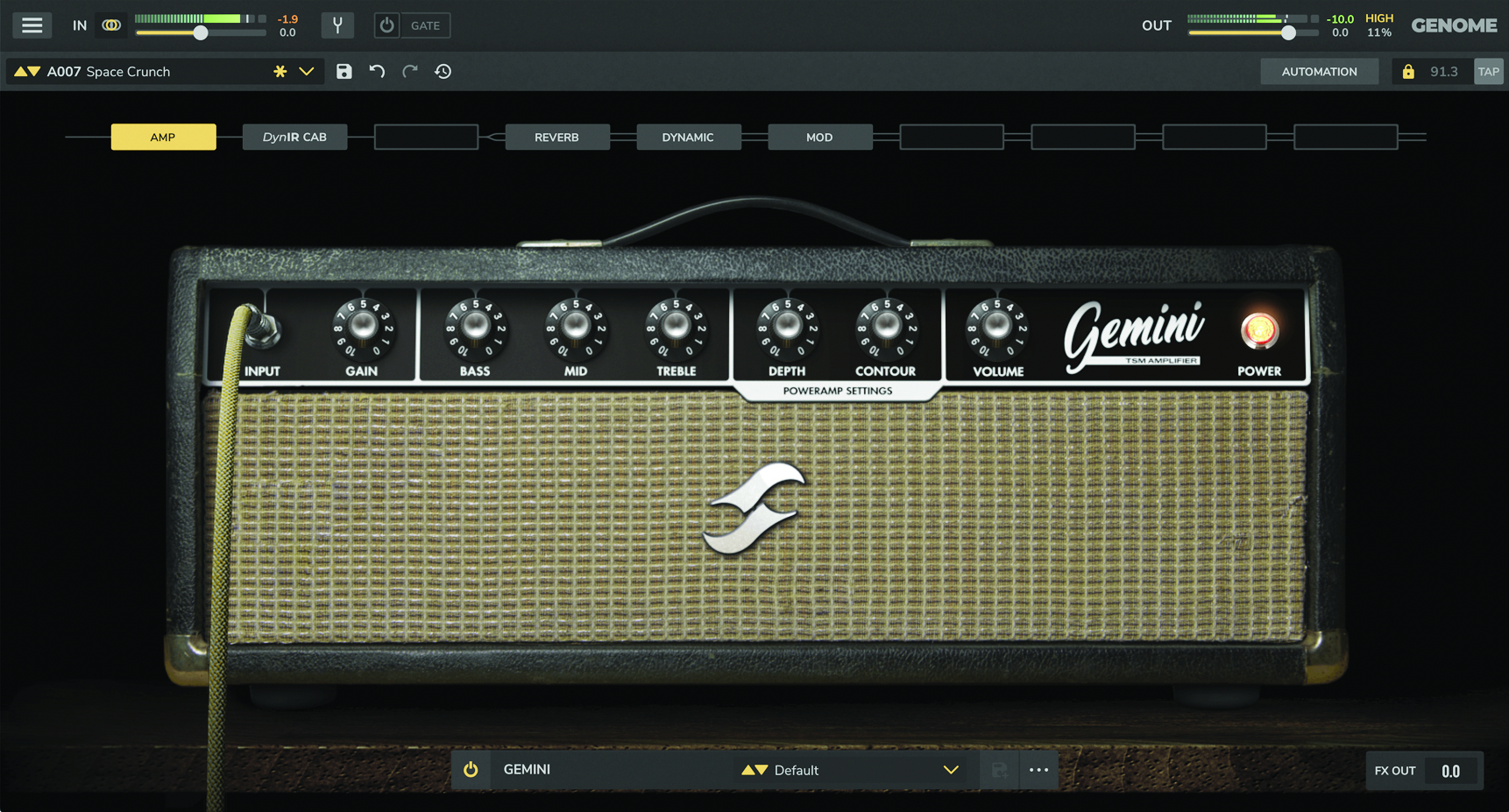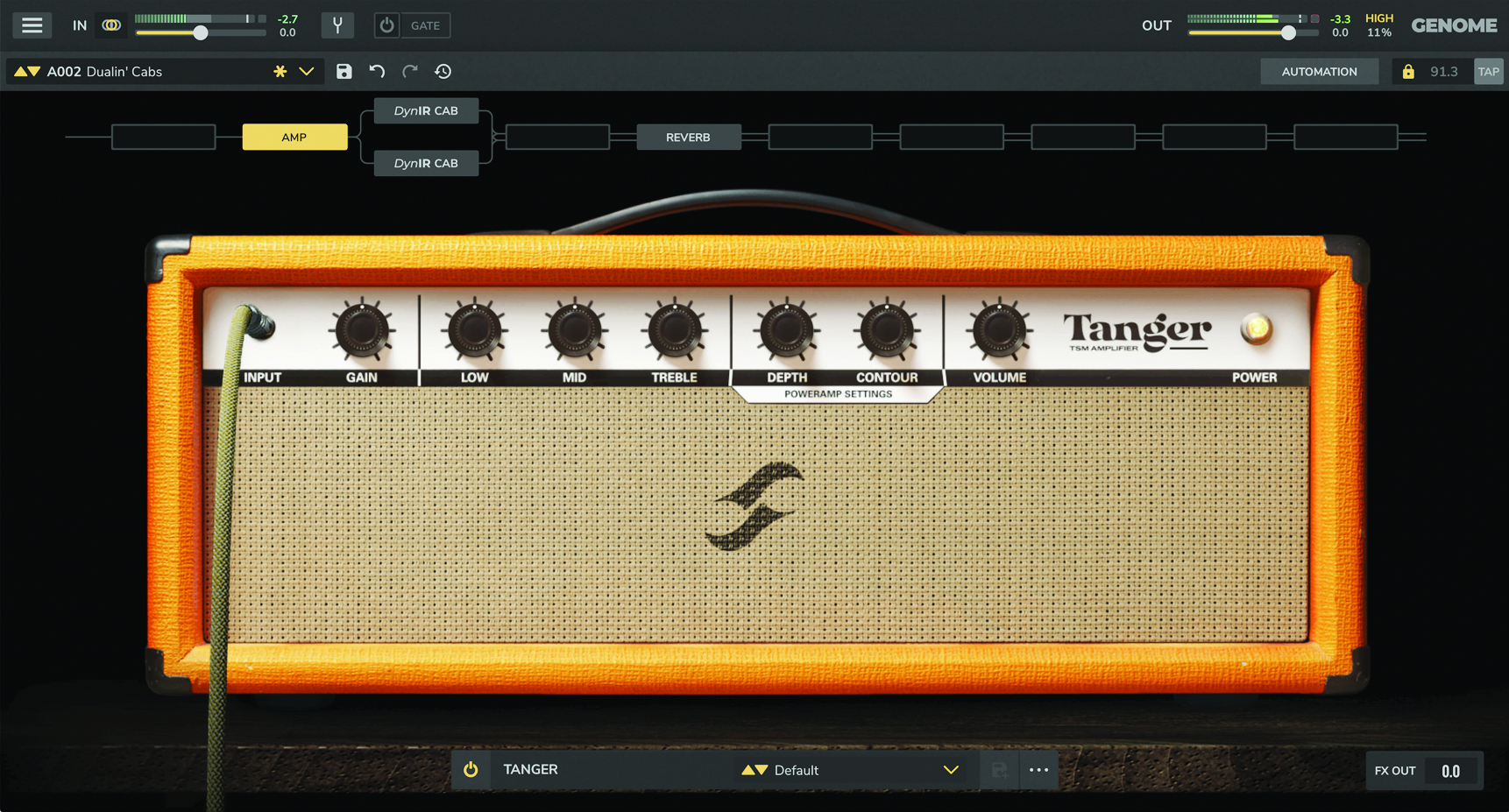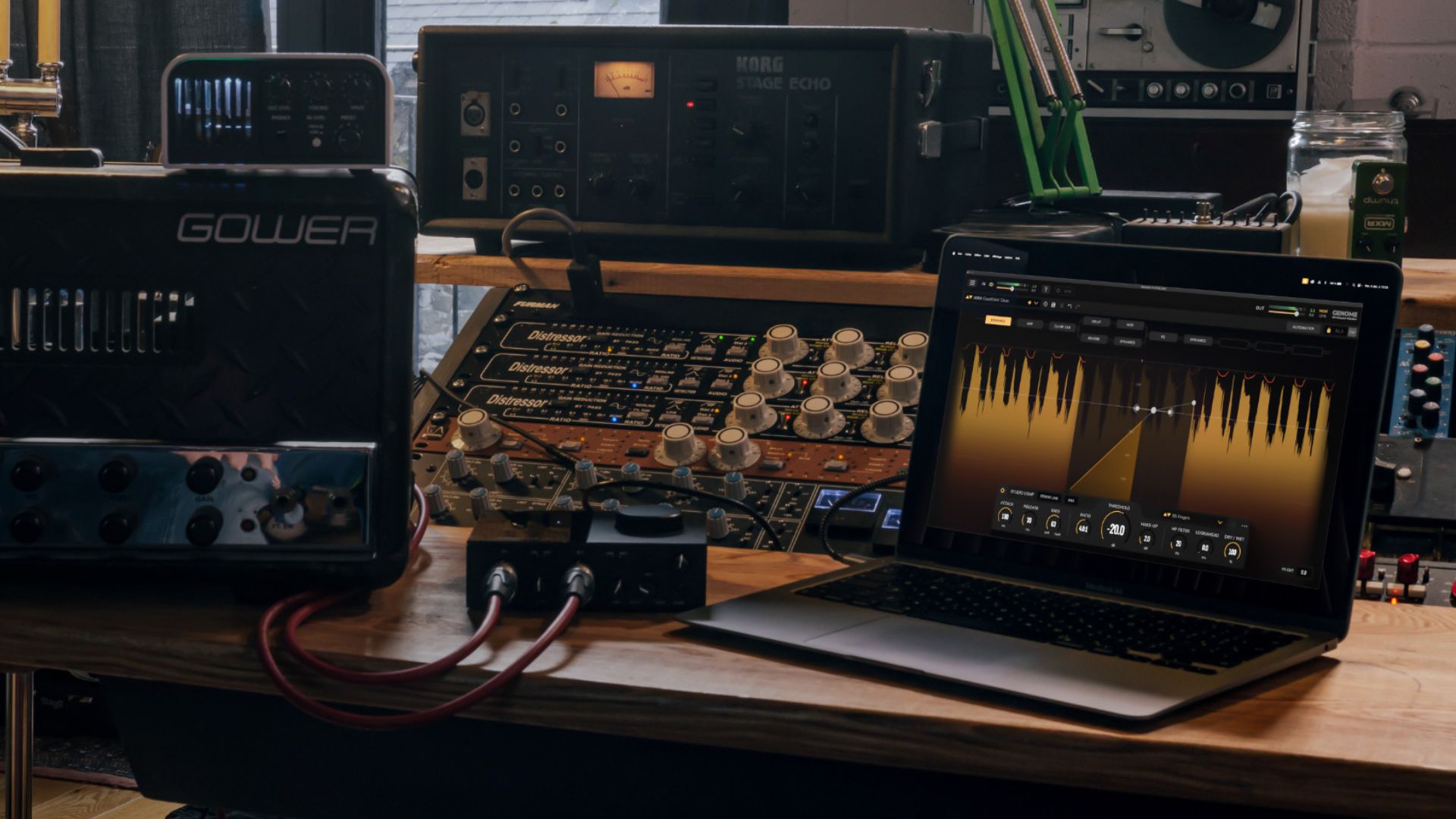GuitarPlayer Verdict
Comprehensive, creative and great-sounding modeling software at an extremely reasonable price.
Pros
- +
Dual generation of amp tone.
- +
Recreate the sound of any amp.
- +
Extensive suite of classic pedals/features.
Cons
- -
Not 100% compatibility – check requirements before downloading.
You can trust Guitar Player.
French gearmaker Two Notes is best known for creating hardware that processes digital simulations of speaker cabinets and, more recently, full guitar amplifiers. But the company is also a long-time developer of software editors that maximize these units’ functions and their users’ abilities to create their own presets. So it makes sense that it has now put these capabilities together in Genome, a totally in-the-box modeling plug-in for use with the most popular DAWs in Mac and Windows.
As Two Notes describes it, Genome is an “ecosystem” designed “to deliver the pinnacle in end-to-end tone shaping.” Being entirely plug-in based, it’s clearly designed for home and studio use, placing it on par with Line 6’s Helix Native, IK Multimedia’s AmpliTube, Native Instruments’ Guitar Rig, Positive Grid’s Bias FX 2, Waves’ Voltage, and several options from Neural DSP, Universal Audio and others.
Part of what makes Genome more than a software-based amp modeler is that it can generate the amp portion of your tone in two ways. The first is via Tube Stage Modeling (TSM), Two Notes’ own relatively traditional approach to digital tube-amp emulation.
TSM amp models in Genome include Foundry (a.k.a. Fender), Albion (Marshall), Foxy (Vox), Nifty Fifty (Boogie-esque high-gain) and Peggy (an Ampeg sim for bass). Within each of these, the dedicated preamp circuits can be mixed with any output-stage available to the others, including both push-pull and single-ended 6L6, EL34, EL84 and KT88.

The second way to dial up an amp sound – or an effect, for that matter – involves the Codex Unification Engine, a piece of software within Genome that can host “captures” created by Two Notes or the third-party suppliers Neural Amp Modeler (NAM), Proteus and Aida-X.
Rather than a software model that digitally re-creates all stages of a classic amplifier, a capture is essentially a sonic imprint of the characteristics of an actual amplifier, which can then be adapted by its host to reproduce that sound. (Kemper, a pioneer in this tech, refers to these as “profiles.”)
The benefit is that you can, with the right capturing/profiling system, re-create the sound of any amplifier you have access to, or acquire a near-endless library from third- party suppliers. And since Codex is more than just a neutral host for amp captures, it lets you mix-and-match tone stacks and position them before or after the captures’ gain stages. It also provides a graphic EQ and Enhancer for considerable tone tweaking.
All the latest guitar news, interviews, lessons, reviews, deals and more, direct to your inbox!
Genome includes an extensive suite of classic pedals that can be placed before or after the amp block. In addition, the DynIR Cab engine offers more than 700 cab models, with eight options for two mics per cab (with near-infinite positioning), as well as studio-style post-amp processing for dynamics, reverb, delay, stereo width, enhancement and other effects.

Genome’s computer interface will largely be familiar to those who have used this type of software before. Even so, Two Notes has applied some thoughtful twists to the user experience and neatly tidied up the workflow in the process with a simple lane-based signal flow that makes it extremely easy to edit complete rigs and create presets.
Simply click on the relevant block in the lane at the top of the plug-in window to activate a pedal, amp, DynIR cab, or other processor; a visual rendering will fill the center of the screen, allowing analog-style controls for that block that you can adjust and save.
The process makes it extremely easy to set up relatively complicated signal chains, either series or parallel paths, and save them as user presets.
As for presets, Genome includes eight banks of 100 rigs per bank, with easy import and export functions for saving and recalling even more. Diving deeper into creative functions within the plug-in reveals nifty tools, such as selective parameter automation within your DAW when used as a plug-in to process recorded tracks.
For example, you can create an automated increase in the drive setting of a Tube Screamer pedal model for a particular guitar passage, or turn up the feedback on an analog delay pedal model in the song’s bridge.
I tested Genome as a plug-in within Pro Tools on my Apple iMac, running a Gibson ES-355 and a Fender Telecaster through a Universal Audio Apollo Twin Duo’s Hi-Z input. After a few minor adjustments for optimal latency and oversampling settings, I found it ran smoothly, and was quick and easy to get up and running with. Sound quality and playing feel were excellent.

Genome includes a plethora of factory presets to get you started. Some are generic, like Cali Cleans and Brit Pack, while others are along the lines of thinly veiled artist-based tones, like Ode to Angus, Note in a Bottle and Sandman. As with most capable modelers today, you get out of it what you put into it, and I believe most players will find themselves more at home and creatively rewarded once they have moved beyond these foundations to compose their own presets.
And once you’re there, this thing flies! Genome is close to a sky’s-the-limit modeling environment, with sound quality that sits well among other leading systems on the market. The more you dive into its potential, the more it delivers.
In addition to Genome’s in-the-box capabilities, you can create hybrid rigs by connecting preamps and/or analog pedals to the front end and disabling the preamp block, or introducing traditional tube amps via Torpedo Captor X, Suhr Reactive Load, Mesa CabClone or another load box and disabling the amp block.
However you cut it, Genome is an Editors’ Pick Award winner given its price, ease of use and massive suite of high-quality features. It’s certain to turn up on countless guitarists’ workstations.
Specifications
- Contact two-notes.com
- Price $79 for direct download (free to Two notes hardware owners)
- Features Plug-in software featuring TSM amp modeling, DynIR cabinet sims, CODEX Unification Engine (capture processor/player), and pedal and studio effects sims
- Built Developed in France
- Formats All main plug-in formats, including VST3, AAX and AU
Dave Hunter is a writer and consulting editor for Guitar Player magazine. His prolific output as author includes Fender 75 Years, The Guitar Amp Handbook, The British Amp Invasion, Ultimate Star Guitars, Guitar Effects Pedals, The Guitar Pickup Handbook, The Fender Telecaster and several other titles. Hunter is a former editor of The Guitar Magazine (UK), and a contributor to Vintage Guitar, Premier Guitar, The Connoisseur and other publications. A contributing essayist to the United States Library of Congress National Recording Preservation Board’s Permanent Archive, he lives in Kittery, ME, with his wife and their two children and fronts the bands A Different Engine and The Stereo Field.


